
آیا شما هم تاکنون از دیدن تصاویر باشکوهی که چشمانداز زمین از بالا را نشان میدهد هیجان زده شدهاید؟ حتماً میدانید که اغلب این تصاویر از ایستگاه فضایی بینالمللی گرفته شده است. ایستگاه بینالمللی که بزرگترین ساختهی دست بشر در فضا است، ۱۵ سال پیش متولد شد. این ایستگاه ۱۵ ساله پس از زمین خانهی دوم بسیاری از فضانوردان نیز به شمار میآید. بیاید با هم آلبوم بچگی تا بزرگسالی آن را ورق بزنیم.
آژانس فضایی روسیه نخستین بخش از ایستگاه فضایی بینالمللی که «زاریا» Zarya نام داشت را در ۲۹ آبان ۱۳۷۷/ ۲۰ نوامبر ۱۹۹۸ سوار بر راکت پروتون روسی از پایگاه فضایی بایکنور قزاقستان به فضا رهسپار کرد. دو هفتهی بعد از آن آمریکاییها دومین قطعهی آن «یونیتی» Unity را با شاتل ایندیور پرتاب کرد. پس از آن سومین بخش اصلی که «زیوزدا» Zvezda نام شد نیزبا موفقیت راهی مدار شد. سرانجام در ۳۱ اکتبر ۲۰۰۰/ ۱۰ آذر۱۳۷۹ نخستین فضانوردان که یکی آنها آمریکایی و دو روس بودند به خانهی جدیدشان قدم نهادند. به مرور قطعههای مختلف آن که هر کدام محصول کشورهای مختلف بودند گردهم آمدند بیش از ۱۵ کشور در این پژوه مشارکت داشتند. این ایستگاه که سومین نسل از ایستگاههای فضایی ساخت بشر به شمار میرود، چهار برابر بزرگتر از ایستگاه فضایی میر و ۵ برابر بزرگتر از اسکای لب است، درست به اندازهی یک زمین فوتبال آمریکایی. شاید با این مقایسه بتوانید اندازهی آنرا بهتر تصور کنید: بزرگی آن به اندازهی یک خانه با ۶ اتاق خواب، فضای داخلی آن به اندازهی یک بویینگ ۷۴۷، وزنش معادل بیش از ۳۲۰ اتومبیل است.
از آن زمان تا به امروز ۳۷ ماموریت، ۱۵۰۰ آزمایش علمی و تقریباً ۱۱۰۰ ساعت راهپیمایی فضایی در آن انجام شده است. جالب است بدانید ایستگاه هنوز کامل نشده است و قرار است تا سال ۲۰۱۵ کامل شود. در ادامه میتوانید فیلمی که به مناسبت پانزدمین سالگرد آن منتشر شده است تماشا کنید.

لحظهای پرتاب نخستین بخش ایستگاه به فضا در ۲۰ نوامبر ۱۹۹۸
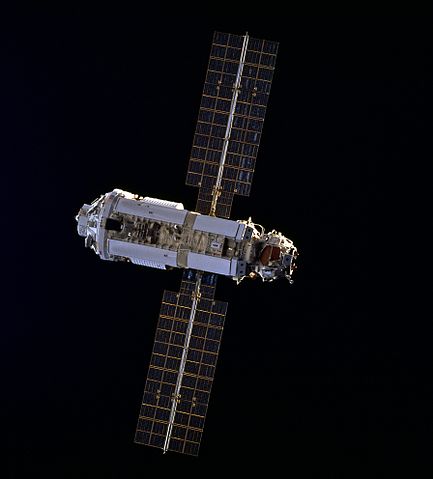
زاریا، نخستین بخش از ایستگاه فضایی بینالمللی
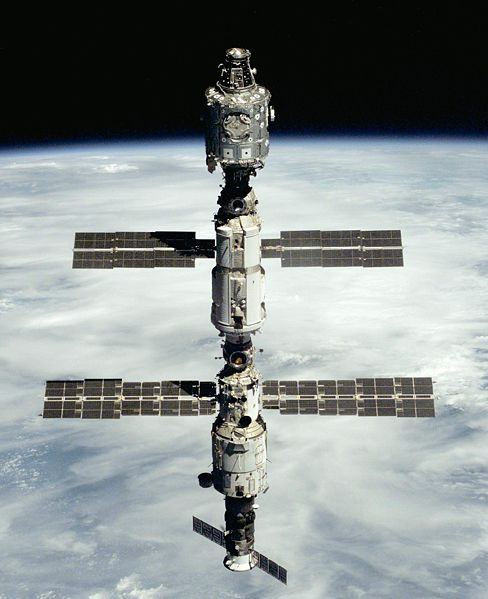
تصویری از سه بخش برهمبندی شدهی اولیهی ایستگاه: زاریا (وسط)، یونیتی (بالا) و زیوزدا (پایین)
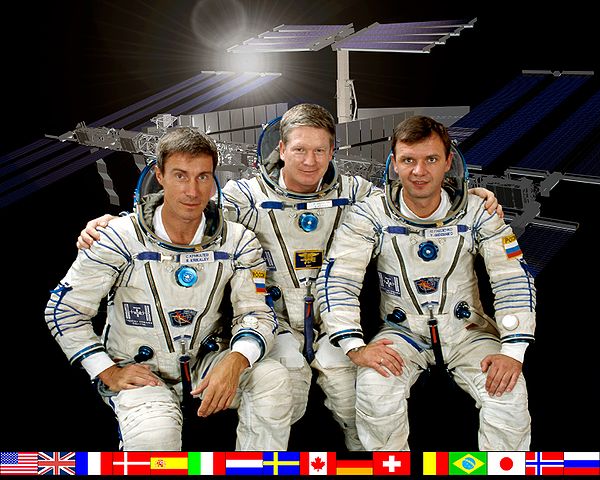
نخستین ساکنان ایستگاه: یوری گیدزنکو، ویلیام شپرد و سرگئی کریکالیوف.
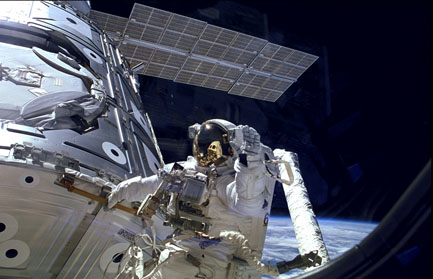
جیمز هیومن در حال اتصال قطعات ایستگاه و در حال دست تکان دادن!
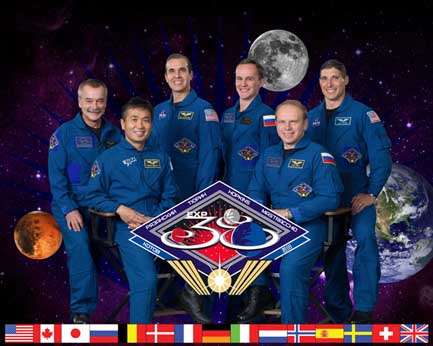
خدمهی کنونی ایستگاه
منبع : space
International Space Station: 15 Facts for 15 Years in Orbit
A new type of "sunrise" dawned above Earth on Nov. 20, 1998, with the launch of the first piece of the International Space Station.
Fifteen years ago Wednesday (Nov. 20), the Russian-built Zarya, or "Sunrise," module, also known as the functional cargo block (FGB), lifted off atop a Proton rocket from the Baikonur Cosmodrome in Kazakhstan to begin the most complex scientific and engineering project in history.
Zarya supported orientation control, communications and electrical power for the emerging outpost. Two weeks after its launch, Zarya was joined on orbit by Unity, the station's first connecting node
It would take 13 years for the space station's assembly to be declared "complete," although it is still being expanded. Today, the station is an active laboratory with hundreds of science experiments being conducted onboard, advancing humanity's knowledge about how to live in space and how to improve life on Earth.
To mark the 15th anniversary, SPACE.com partner collectSPACE.com compiled a countdown of 15 facts about the International Space Station.
15
Sunrises, sunsets
Circling Earth at 17,500 miles per hour (28,000 kilometers per hour) every 92 minutes, the crew members aboard the International Space Station "experience 15 or 16 sunrises and sunsets every day," NASA's Earth Observing System (EOS) Project Office describes.
"The whole station glows with the light of dawn," Canadian astronaut and former ISS commander Chris Hadfield told NPR in a recent interview. "You can see the dawn come across the world towards you."
"Then you go back to work and wait another 92 minutes, and it happens again. It's not to be missed, and I tried to watch as many sunrises and sunsets as the work would allow," he said.
Since the launch of the first "Sunrise" (Zarya), the station has "seen" more than 175,000 sunrises and sunsets.
14 Rooms
The space station today has more livable room than a six-bedroom house — spread across 14 pressurized modules or components.
There are three laboratories — the U.S. Destiny module, European Columbus module and Japan's Kibo lab — and three connecting nodes (Unity, Harmony and Tranquility). On the Russian side, there are two docking compartments (Pirs and Rassvet), the Zarya FBG and Zvezda service module. [15 Years of Space Station Science and Construction (Video)]
Quest serves as the U.S. operating segment's airlock and the Leonardo permanent multipurpose module (PMM) acts as a closet for storage space. The Kibo module also has its own supply closet (the "JLP") and lastly is the Cupola, a seven-windowed observatory.
The space station's internal volume is about the same as a Boeing 747 jumbo jetliner.
13 Years of continuous residency
It took two years of construction before the space station was ready for tenants. The three-member Expedition One crew, NASA astronaut William Shepard and cosmonauts Sergei Krikalev and Yuri Gidzenko, arrived at the orbiting outpost on Nov. 2, 2000, and the space station has been continuously occupied ever since.
Initially, the station's crew was limited to three people, and for a period of time, that was reduced to only two. Today, the Expedition 38 crew has six members.
Over the past 4,766 days (as of Nov. 20), 88 people have lived aboard the space station as resident crew members, with another 120 or so people visiting the orbiting outpost to help with construction and deliver supplies.
12 Months for the first yearlong mission
To date, the longest expedition on board the International Space Station was 215 days and 8 hours, logged by the Expedition 14 crew of Michael Lopez-Alegria and Mikhail Tyurin from September 2006 to April 2007. Their seven months in space was one and a half months longer than the typical resident crew's stay, which averages about five and a half months in duration.
But as attention turns to sending astronauts out into the solar system, NASA and its international partners are now preparing for the first yearlong stay on the space station.
The shuttle fleet was critical to the assembly of the space station, delivering to orbit the truss segments that formed the outpost's backbone, as well as most of the modules. When the ISS was completed, the orbiters were retired.
Six other spacecraft have and continue to supply and staff the station.
Since Expedition 1 in 2000, Russia's Soyuz has been the primary means for astronauts and cosmonauts to travel to and from the outpost. Similarly, the station's primary cargo craft has been Russia's unmanned Progress craft, which on Nov. 25 will lift off for the 53rd flight to the station.
JAXA's H-II Transfer Vehicle (HTV) and ESA's Automated Transfer Vehicle (ATV) have each resupplied the station four times to date.
Most recently, NASA has contracted with U.S. companies SpaceX and Orbital Sciences to send cargo to the space station on their Dragon and Cygnus vehicles, respectively. Moving forward, the U.S. space agency is also planning to hire private spacecraft to fly its astronauts to and from the space station, with flights starting in 2017.
6 Sleep stations
Although the space station is often compared (including in this article) to the volume of a six-bedroom house, the ISS does not include traditional bedrooms for its resident crew. Rather, six phone-booth-size pods serve as sleep stations and private space for each astronaut and cosmonaut.
"Originally, they were going to put us all in one habitation module with sleep stations all around it, but the way the station was eventually built, we have sleep stations inside [Unity] Node 2, which is in the forward part of the station, and inside the service module, which is in the aft," Chris Hadfield described in a video he filmed about sleeping in space.
"Inside each one is just a sleeping bag tied to the wall. You might think it's uncomfortable not having a mattress and a pillow but without gravity, you don't need anything to hold you up. You can just completely relax and you don't even need a pillow," said Hadfield.
Continue the countdown at collectSPACE.com to read the remaining five facts about the International Space Station’s first 15 years in orbit.
 گجت نیوز آخرین اخبار تکنولوژی، علم و خودرو
گجت نیوز آخرین اخبار تکنولوژی، علم و خودرو 





